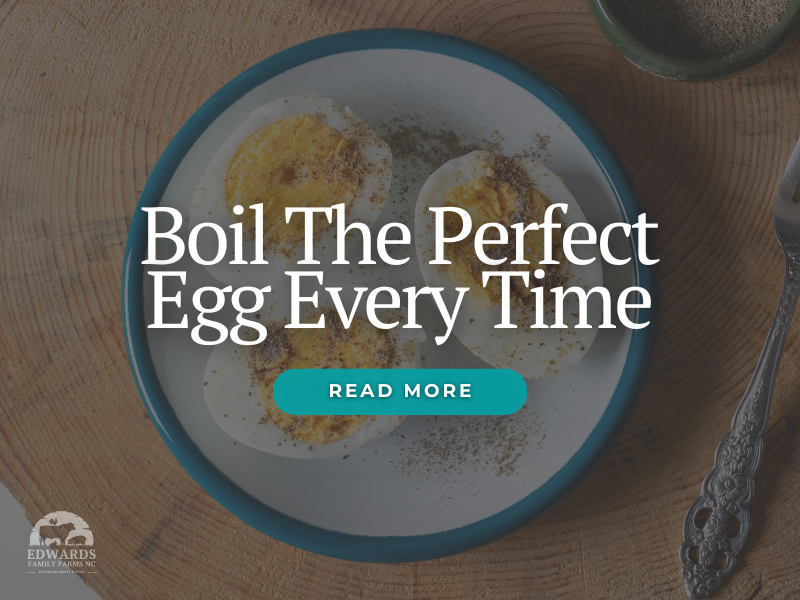How To Identify A Rooster or Hen
posted on
September 18, 2023
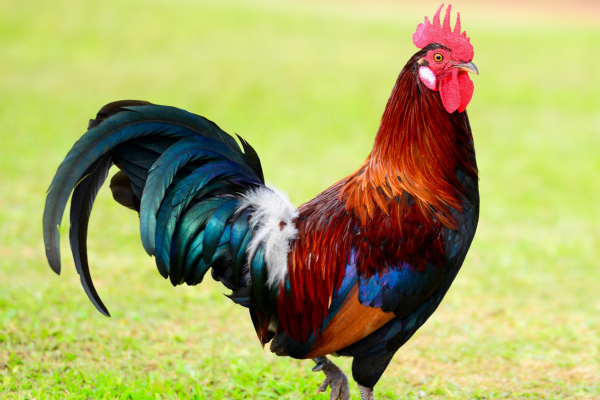
For anyone new to the world of poultry, distinguishing between a rooster and a hen can be a bit perplexing at first glance.
These feathered friends are an essential part of backyard flocks and provide us with eggs, meat, and plenty of entertainment.
However, knowing the difference between male and female chickens is vital for managing your flock effectively.
In this article, we'll take you through some simple methods to help you distinguish a rooster from a hen.
Not So Helpful Methods:
Observe Size and Build
One of the most apparent differences between roosters and hens is their size and physical build.
- Roosters are generally larger and more robust than hens. They often have a more upright and confident posture.
- Their bodies are more muscular, with thicker necks and larger combs and wattles on their heads.
- In contrast, hens tend to be smaller, more streamlined, and have a less prominent comb and wattles.
Examine the Comb and Wattles
The comb and wattles are fleshy, red or pink appendages on a chicken's head and neck, respectively. They play a crucial role in regulating a chicken's body temperature and can help you distinguish roosters from hens.
- Roosters usually have larger, more vividly colored combs and wattles than hens. Rooster combs are often taller and more upright, while hen combs are smaller and lay flatter against their heads.
- In some breeds, like the Leghorn, the difference is quite distinct, with roosters having large, upright, and bright red combs and wattles, whereas hens have smaller, paler ones.
Depending on the breed you are trying to determine, this method may not always be accurate.
Watch for Behavioral Differences
Roosters and hens often display distinct behaviors:
- Roosters are more protective and may exhibit more aggressive behavior, especially when defending their territory or hens.
- They may puff up their chests, strut, and even engage in chest-bumping to establish dominance.
- Hens are generally calmer and more focused on activities like scratching and pecking for food. They also tend to be more nurturing and may exhibit motherly instincts when caring for chicks.
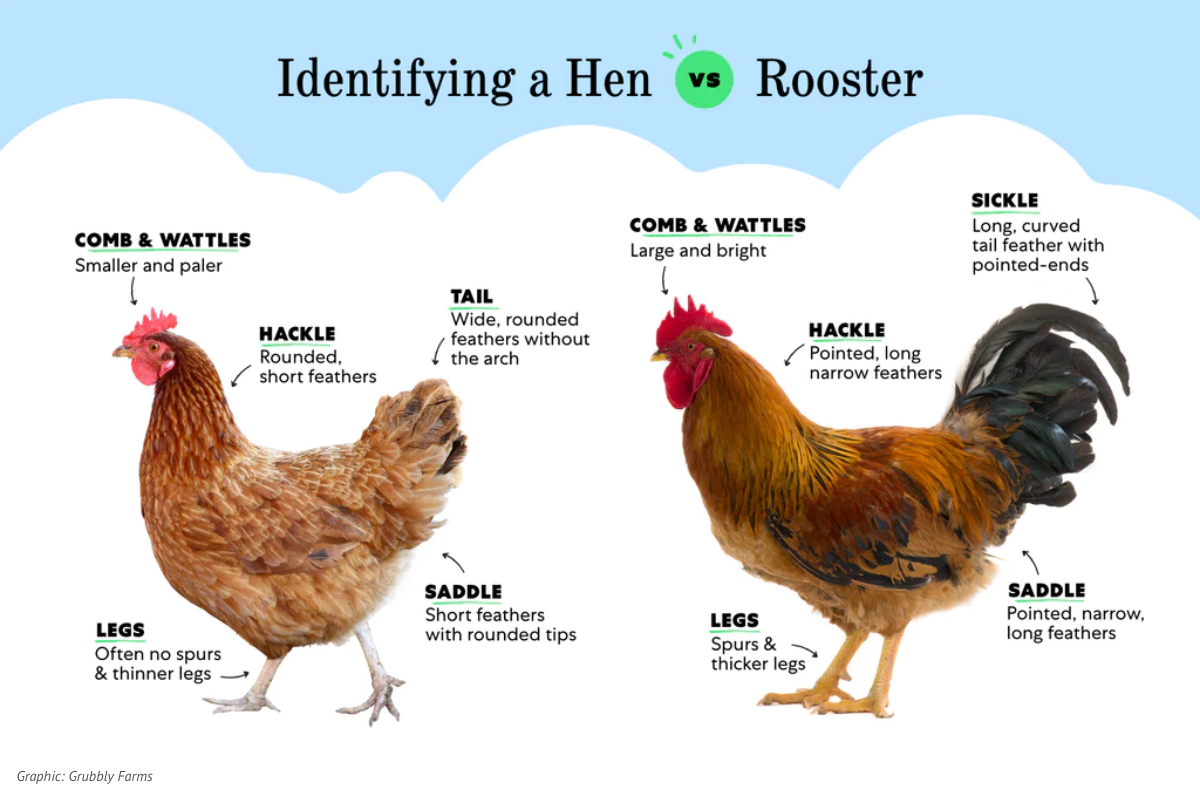
Foolproof Methods:
Feathering Detail
The feathers on a chicken can also offer valuable clues about their gender:
- Roosters often have more prominent and colorful plumage than hens.
- Their feathers can be more iridescent, and they may have long, pointed saddle feathers near the base of their tail.
- Hens tend to have more subdued feathering, and their plumage may be less vibrant and glossy. Their tail feathers are generally rounded and lack the pointed appearance seen in roosters.
Listen for Crowing
Crowing is the hallmark behavior of roosters.
While some hens can make noise, it's typically roosters who let out the classic cock-a-doodle-doo crowing sound.
If you hear crowing in your flock, you can be reasonably confident that you have a rooster on your hands.
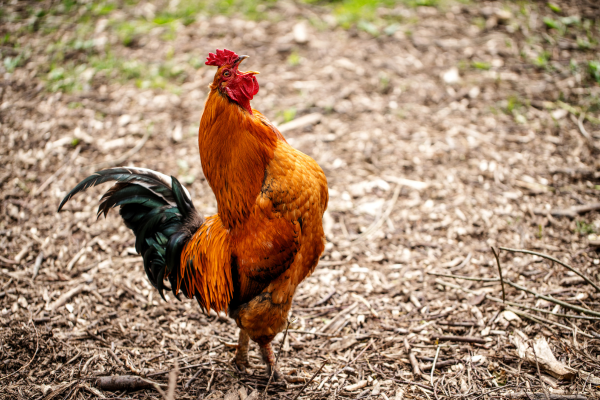
Identifying Spurs
If you see spurs on a chickens leg, then you have yourself a rooster.
However, this identifier is not usually developed until around 7-8 months of age. More than likely by this time, you have already heard the rooster practicing his crowing.
But if you have not witnessed the crowing, this method is a foolproof way to determine a rooster or hen.
Eggs
If you notice you your chicken laying eggs, you most definitely have a hen.
Roosters do not lay eggs and hens do not need a rooster present to lay eggs (only to fertilize them).
But, depending on the breed of chicken you have, you may not see eggs until the chicken reaches 6 months to a year of age.
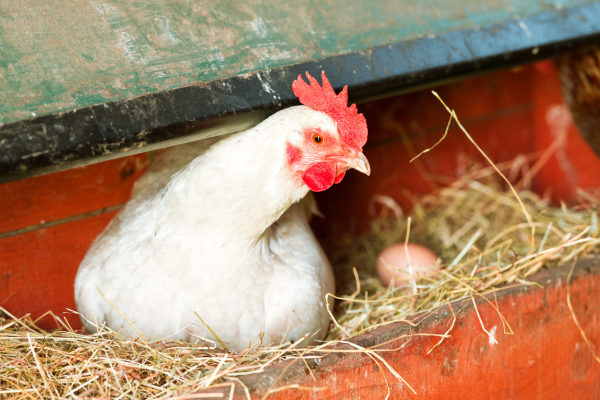
Distinguishing between a rooster and a hen is an essential skill for anyone raising chickens.
By observing their size, physical characteristics, comb and wattle size, feathering, vocalizations, and behavior, you can confidently identify these two distinct members of your flock.
Whether you're interested in breeding chickens, maintaining a peaceful coop, or simply satisfying your curiosity, recognizing roosters from hens is a valuable skill in the world of poultry keeping. Read more about the pros and cons of keeping a rooster in this article!
Happy chicken farming!


